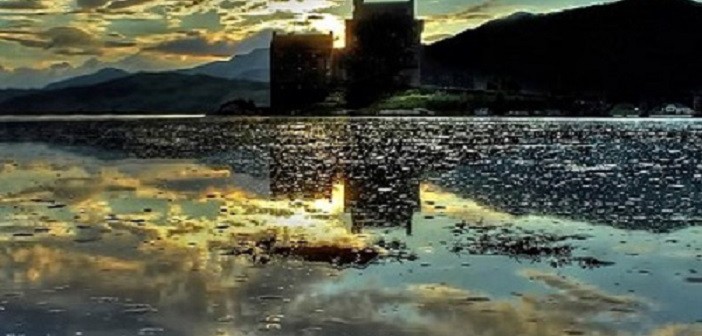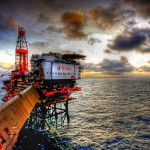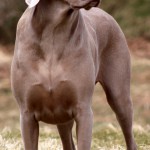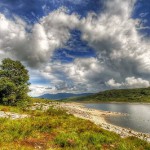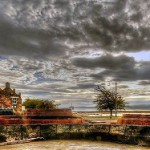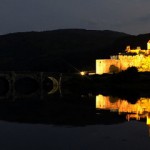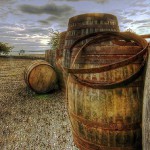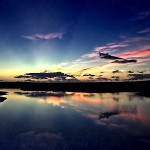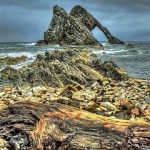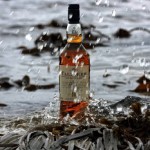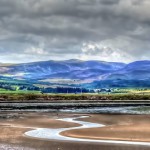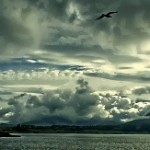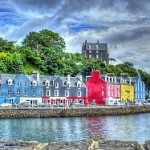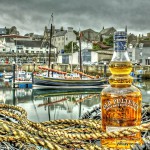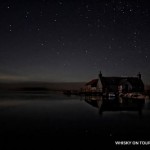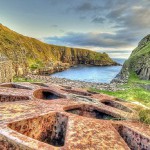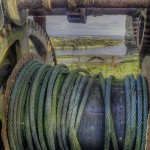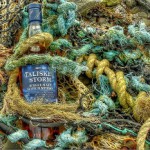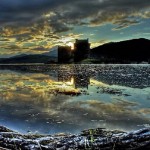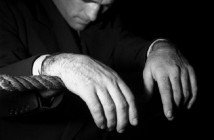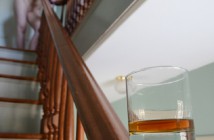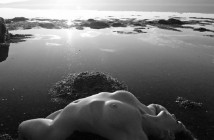Editor’s Note: Ian Horne is a regular contributor to TD’s Facebook page where his “camera art” is very popular. He is now a contributor to the Transcendental Dram and he is also TD’s Drambassador to the North Sea. We “sat down” with Ian to find out how he gets such dramatic shots of Scotland as we see here and in the gallery below.
TD: I once went fishing with a fly-fishing instructor. At the outset he asked, “Are you a fisherman or do you just like to go fishing.” One look at your work and it is clear that you are a photographer while most of us just take snaps, as a photographer friend of mine calls them. When did your interest in photography begin?
Ian: I would never consider myself a professional photographer. Real photographers go to college, take courses, study, pass exams, etcetera, etcetera. Then they can call themselves photographers. What I do with my pictures, I call “camera art.” I first started a real interest in taking snaps when I bought a basic entry Canon 1000D with some vouchers I received back in 1989 from a company for working for them for 20 years.
TD: Are you self-taught or have you had lessons or classes?
Ian: I would say I am self taught. I have a couple of mates who are really into the technical side of the camera and they keep me right and help me with special settings, lighting, editing, etcetera, etcetera. I also find YouTube very handy for learning new things. I did go to a camera club for a few weeks, but it wasn’t really for me. I prefer to just wander on my own with the dog.
TD: Is your dog your muse?
Ian: My dog Kobi [pictured below]is an eight year-old Weimeraner who needs 10 miles a day of exercise, so wandering with him kills two birds with the one walk.
TD: Do you see the image first and go get it, or are you surprised later with the results?
Ian: I sometimes I see something when driving and think that would make a good pic with a bottle in the foreground, etcetera, etcetera. I will then go back and get the picture sometime days later. Some days I just take a bottle with me and the random shots just seem to happen. I seem to be lucky and have a creative streak.
TD: How do you achieve the intense color in many of your images?
Ian: I go through a pretty intense work flow to get the vibrant colors. Most of them are three exposure HDR, high dynamic range that can catch all the colors the eye can see. One won’t do it, so it takes three. They are then merged and tone mapped in Photomatix. I also use various Topaz programs for detail and to take the image noise out of the picture. Sometimes I use Photoshop Elements 10 for cropping, straightening, and final tweaks. Other times I take another three very dark exposures which I find great for adding a moody sky to my snaps.
TD: It’s clear, for the most part, that you have a short window to take your photographs. Is the light better for you in the early morning or the end of the day?
Ian: We are very lucky to live on the east coast of Caithness in the northern most part of Scotland. We get great sunrise and early morning light. A 30 minute drive away on the north west coast it is great for sunsets and evening light. For night time we are lucky to have very little light pollution, and the aurora is showing up every other week now, or so it seems.
TD: What kind of camera(s) do you use? Do you have a favorite?
Ian: I have a Canon 650D. It has a flip out screen which is great for low level shots. Saves lying about on the ground. I mainly use a 18/35 lens for the bottle shots and a 10/20 for the scenery shots.
TD: What is your day job?
Ian: My day job is a scaffolder on a north sea oil rig, the Alwyn north owned and operated by Total Fina Elf. We provide scaffold access platforms to all other trades to upkeep and install new plant on the platform. We run with about 12 to 15 scaffolders, and the number of personnel on board the platform runs at 250. [Editor’s Note: two images of where Ian works are in the gallery below. Note how one image from Alwyn has a similar palate as Ian’s camera art. Not a concidence in our selection.]
TD: So photography is a way for you to relax?
Ian: Getting out with the camera is a great way for me to unwind when I get home for my two weeks shore leave. My wife loves using her camera as well, so we try and get away camping as often as we can during the summer months. There really is so much unspoilt wilderness in the highlands of Scotland, and plenty of distilleries to visit.
TD: Do you have any other “hobbies” that demand this kind of attention?
Ian: I don’t have any other real hobbies as such. I have a 2 year-old grandson who now takes up a fair bit of our time. My son-in-law also works offshore, and our daughter Tanya runs her own highland dancing school which also keeps them busy. So we try to help out as much as we can.
TD: What are your favorite whiskies?
Ian: My own favorite whisky is the Old Pulteney 21 yr old. It is a fantastic dram. I only drink it for special occasions. The Old Pulteney 12 yr old is one of my normal drams, along with Talisker, Laphroig, and Highland Park. The most expensive whisky I have tasted was at local hotel, The Mackays, who had a cask made for the hotel. It costs about 95 a nip but it was really really nice. I have purchased a bottle of the Old Pulteney 40 yr old as an investment for the grandkids.
TD: Thanks, Ian, for giving us a different taste of Scotland. We look forward to more camera art in the future.
Editor’s Note: We have an advance notice on a special framing of these images that you can order and own—hanging a wee bit of Scotland in your office, den or family room. Ian is making arrangement to frame these images using the wood from old retired casks. Got to get me one of them…and get a contact high from the frame. Contact Ian here: elamanya@hotmail.co.uk and visit his Facebook page here. Tell Ian you read about him here and saw his camera art here as well.

